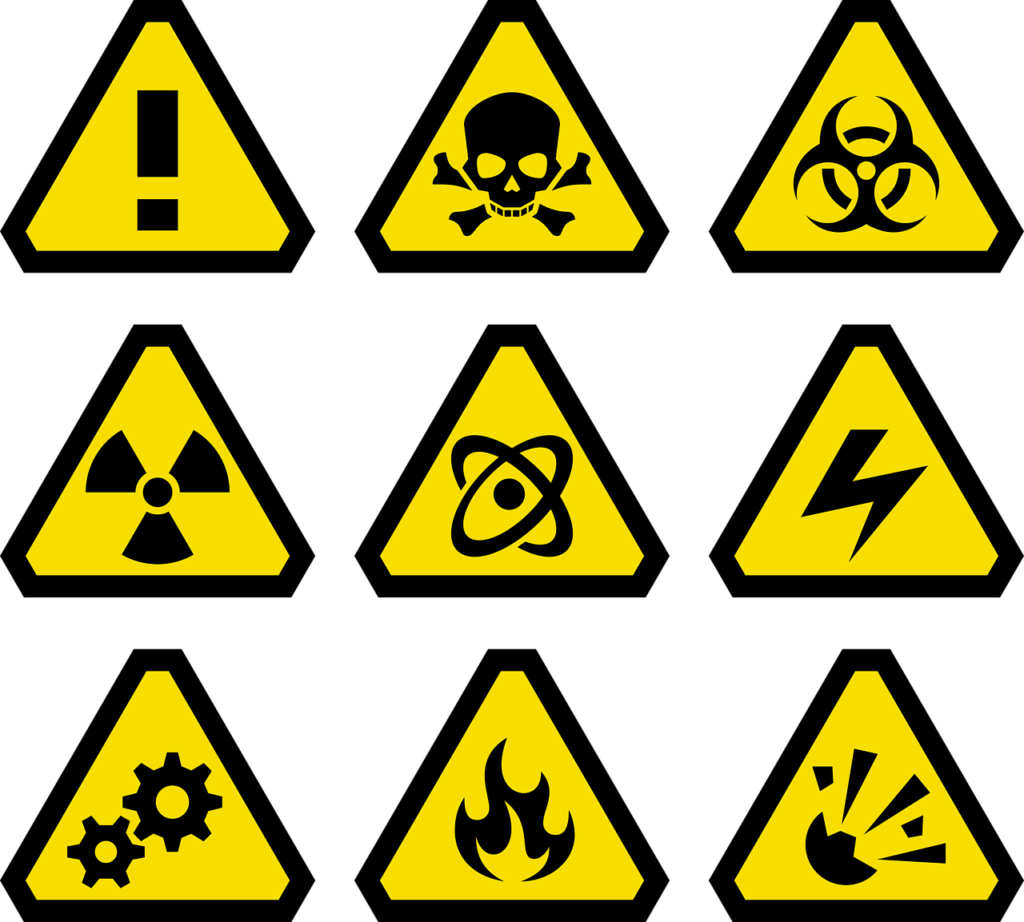 Hazard communication saves lives every single day in New York. Not only is letting workers know about potential hazards required by law, but it is a common-sense way to ensure people understand what they are handling—and don’t get hurt.
Hazard communication saves lives every single day in New York. Not only is letting workers know about potential hazards required by law, but it is a common-sense way to ensure people understand what they are handling—and don’t get hurt.
What Is Hazard Communication?
Hazard communication refers to conveying information about potentially hazardous materials to everyone at a worksite. This should be done verbally and through proper labeling of containers. It is not enough to just label materials, however. Employers need to make sure their employees understand how hazardous materials are labeled, what the different classifications mean, and how to properly handle those materials. This involves initial training as well as regular refresher sessions to make sure everyone is kept up to date.
Hazardous materials must be labeled to indicate the precise hazard—flammable? explosive?—and how it should be contained. Safety data sheets must also be kept on hand at worksites so that employees and managers can quickly look up information in case of an accident or spill.
Why Is It Important?
Hazard communication not only saves lives and prevents costly accidents, but it is also required by law under regulations enforced by OSHA. Failure to follow proper communication guidelines, including labeling and training, can result in expensive fines. These mistakes or failures by employers can also open them up to potentially expensive lawsuits, if employees are needlessly injured by the hazardous materials.
What Are the Nine Classifications of Hazards?
There are nine classes of hazardous materials categorized by OSHA and other safety organizations. These are indicated numerically and often with pictograms. Although some classes have subdivisions, the basic classes of hazards are:
- Class 1 – Explosives: These are items that have the potential to explode due to internal or external combustion, pressure, or other factors.
- Class 2 – Gases: This can include gases that are flammable, those that are toxic, and gases that are neither flammable nor toxic but compressed under pressure, able to burst.
- Class 3 – Flammable liquids: Liquids in this class are likely to catch on fire or combust at different flash points.
- Class 4 – Flammable solids, spontaneously combustible materials, and dangerous when wet materials: This class encompasses solid materials that are flammable or that can burn without the introduction of an external flame. Materials that may be potentially flammable or toxic when wet, or which can combust when introduced to water, are also contained within this class.
- Class 5 – Oxidizers and organic peroxides: Objects in this class include oxidizers or materials that yield oxygen, which means they can cause or increase the chances of combustion of other materials. Organic peroxides are organic compounds that are used in manufacturing, but have the potential to explode when introduced to certain materials.
- Class 6 – Toxic materials and infectious substances: This class involves not only biological materials that can be infectious – such as medical waste – but also poisonous substances: liquids, solids, and even dust; for example, asbestos.
- Class 7 – Radioactive materials: Items in this class are radioactive within a certain activity range categorized by government agencies. These must be stored and handled very carefully to prevent serious health problems.
- Class 8 – Corrosive materials: Since these materials can erode different substances, the way they are stored and handled is very important.
- Class 9 – Miscellaneous dangerous goods: Anything that is potentially hazardous but does not fit well into one of the other classes goes here. That can include things like dry ice or batteries with toxic chemicals.
Employers have a legal and moral obligation to protect their employees from harm. Hazard communication may seem like a hassle, but it reduces the chances of catastrophic fires, explosions, chemical burns, long-term illnesses, and more. While these dangers are minimal in an office setting, at construction sites, they are far more prominent.
If you work in construction or another dangerous industry, hazard communication is vital. For more information about workplace safety violations from a top New York construction accident law firm, visit Wingate, Russotti, Shapiro, Moses & Halperin, LLP’s website or call (212) 986-7353 if you’ve been injured.